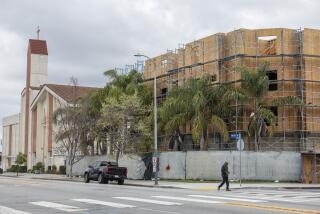Proposition 13 works
- Share via
Bill Stall calls for a “face-lift” of Proposition 13 on its 30th anniversary, but to most Californians, it looks very good just the way it is.
Howard Jarvis, the leader of California’s most famous tax revolt, passed away more than 20 years ago, but over the last year his name continually popped up in newspaper articles across the United States. Property tax troubles were brewing throughout the country, and Jarvis’ legacy, property-tax-cutting Proposition 13, was remembered by beleaguered taxpayers as something to be emulated to protect against out-of-control taxation.
As Proposition 13 reaches its 30th anniversary on Friday, there have been no protests over high property taxes in the Golden State. Proposition 13 still has opponents and critics, but in recent polls, voters still support the measure by the same 2-to-1 margin it passed by three decades ago.
Under the provisions of Proposition 13, California taxpayers enjoy a sense of security, knowing what their property taxes will be year to year. The same cannot be said for taxpayers in other states. Over the course of the last year, from Florida to Indiana to Arizona to Washington, the shock over dramatically rising property taxes led residents to swamp tax officials with appeals for lower assessments, to organize protests and to prepare initiatives to overhaul state property tax systems.
Meanwhile, in California, taxpayers seem satisfied. Proposition 13’s acquisition-type property tax system set the tax assessment when a property is purchased and capped future increases. Placed in the state Constitution by initiative in 1978, Proposition 13 stated that property tax rates could not exceed 1% of the property’s market value and, absent a sale or major remodeling of the property, property value increases were capped at a maximum of 2% per year. If a property were purchased, the property could be reassessed at 1% of the new market value with the 2% cap put in place for yearly increases.
Despite Proposition 13’s initial tax cut, property tax revenue has been the most reliable of any tax revenue source in the state. It has not ebbed and flowed like the sales tax or, particularly, the income tax. California is currently facing a severe budget shortage because of the downturns in sales and income taxes coupled with legislative spending that exceeds revenue collection. However, because of the 2% yearly factor and change-of-ownership reassessments under Proposition 13, there has even been a steady increase of property tax dollars exceeding the inflation rate year in and year out.
That is true even in difficult economic times. Because most properties are taxed at acquisition value plus 2% yearly increases, a property’s value on the tax roll is usually much lower than current market value. So when the current market value drops, most properties, unless recently purchased, continue to pay the same taxes plus the 2% inflation increase. Property tax revenue in California counties has generally increased.
Since 1980, Los Angeles County’s property tax revenue has gone up by an average of 7% a year. Last year, the increase in revenue was over 9%. And even with the housing market taking a hit with the subprime loan crisis, officials indicate that the county will still show a positive property tax revenue flow of about 5% this year.
As to Stall’s recommendations of increasing property taxes on business and lowering the two-thirds vote to raise taxes, both are bad ideas.
Efforts to raise property taxes on business property will only hurt the economy. Small businesses would suffer most, as many of their leases require them to pay any tax increase levied against the property. Without a two-thirds vote requirement for taxes, California taxpayers would be buried under a deluge of new taxes. The voters overwhelmingly rejected this idea in 2004.
While local governments have enjoyed reliable property tax revenue under Proposition 13, taxpayers have enjoyed something they rarely, if ever, had under subjective property tax reassessments -- something taxpayers in other states are yearning for: tax certainty.
The beauty of Proposition 13 is that it not only makes taxes predictable for property owners, which allows them to budget for taxes, it stabilizes revenue to those government agencies that depend on the property tax.
Looking out across the property tax landscape, the trail blazed by Howard Jarvis still beckons others to follow.
Jon Coupal is president of the Howard Jarvis Taxpayers Assn., and Joel Fox is past president of the association, the current president of the Small Business Action Committee and the editor of Fox & Hounds Daily.
Blowback is an online forum for full-length responses to our articles, editorials and Op-Ed articles. Click here to read more about Blowback, or submit your own by e-mailing us at opinionla@latimes.com.
More to Read
A cure for the common opinion
Get thought-provoking perspectives with our weekly newsletter.
You may occasionally receive promotional content from the Los Angeles Times.






